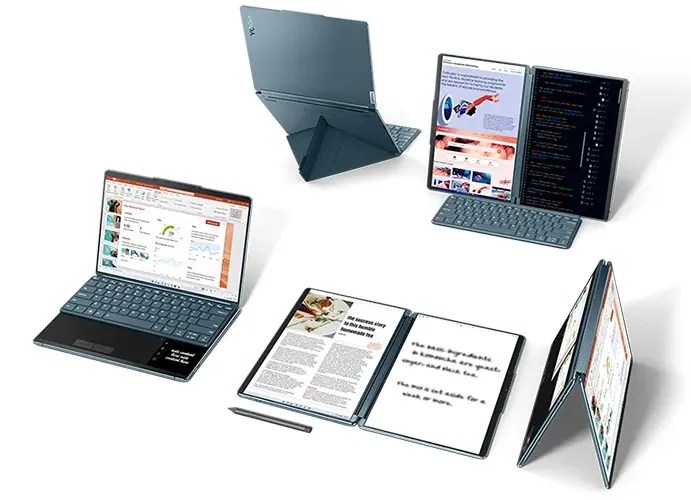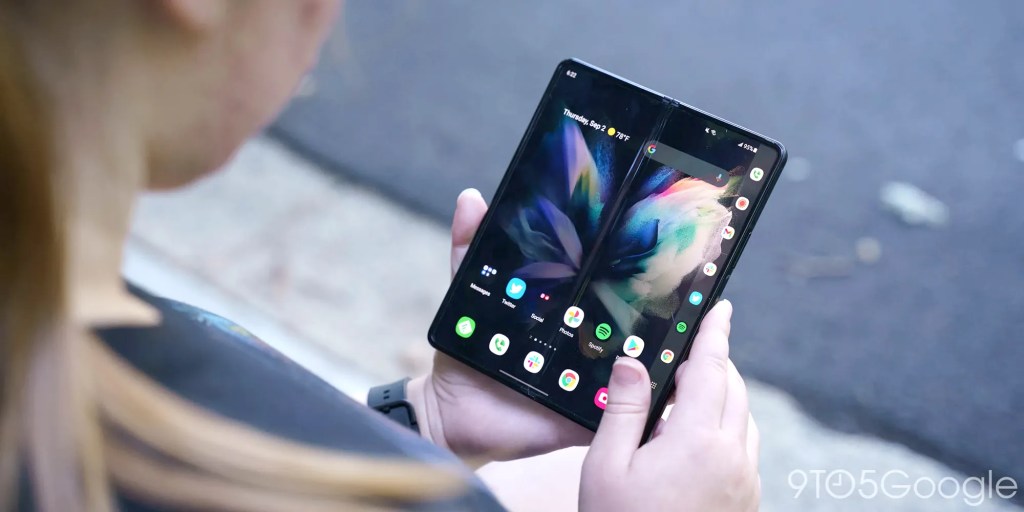
It was claimed earlier this week that Apple is actively working on a folding MacBook, and that plans for this are further advanced than those for a folding iPhone or iPad.
The term ‘folding MacBook’ is a rather awkward one given that the description could be applied to any of the existing models, but what’s meant by it is of course something very different …
The folding MacBook report
We should begin by noting the source of the claim is analyst Ming-Chi Kuo, and I’ll repeat our disclaimer for his posts these days.
Kuo was once the most reliable Apple analyst around, with rock-solid supply chain sources, but now posts a great deal of mere speculation. I suspect his change of employment means that he no longer gets to spend much time on the ground in China talking with Apple suppliers.
My colleague Chance Miller has written at length about this. But for whatever it may be worth, here’s what he had to say:
Recently, I’ve received many inquiries about whether Apple plans to mass-produce the foldable iPhone or iPad in 2025 or 2026. My latest survey indicates that currently, Apple’s only foldable product with a clear development schedule is the 20.3-inch MacBook, expected to enter mass production in 2027.
What do we mean by a folding laptop?
Obviously all MacBooks have the same folding clamshell design we’ve been using for more than four decades now, so the phrase isn’t a particularly helpful one. But it’s clear that what is meant is something broadly along the lines of the Asus Zenbook 17 Fold launched back in 2022, or the Lenovo Yoga Book (shown above).
It’s a modification of the traditional clamshell design, in which the keyboard is replaced by a second display. This offers a wide range of flexible usage options, as Lenovo’s promotional image illustrates:

A single product offers a wide range of form-factor options, allowing us to choose the best one for our usage at any given time:
- A classic clamshell laptop
- A laptop with second screen above the main one
- A desktop
- A double-page touchscreen notebook
- A double-sided screen suitable for presentations
What would be awful with such twin-screen devices is if we had to type on a screen, rather than a physical keyboard – which is an approach taken by some of these devices. But the two mentioned above include a physical keyboard, with Lenovo’s approach allowing this to sit on the lower screen to completely replicate the clamshell design.
These two models use completely separate screens, with a conventional hinge mechanism. Another potential design is a single display which bends in half, along the lines of Samsung’s Galaxy Fold phones:

In principle, this is a better design, as it removes the gap in the middle when used as a single large monitor in desktop mode, but in practice nobody has yet cracked this problem: Samsung’s phones have been widely criticized for a very visible crease, and massive reliability problems.
What can we expect from a folding MacBook?
Assuming the report is accurate – namely, that a folding MacBook is at a serious stage of development, and that 2027 is the intended timing – then I would predict four things.
Dual-screen, not bendable screen
Given that Samsung is Apple’s lead display supplier, and the Korean company hasn’t been able to make a single folding display work, we can be pretty sure Apple is currently taking the dual-screen approach.
Physical keyboard
It also seems clear that, at this stage of technological development, Apple is likely to stick to a physical keyboard.
Longer-term, the company’s goal does appear to be to replace physical keyboards with screen-based ones – and Apple does have patents which describe ways to overcome all three problems with these:
- It hurts our fingers to tap on a rigid glass surface
- We can’t touch-type, because we can’t feel the keys
- We don’t get tactile feedback when we tap a key
Apple’s potential solutions are:
- A soft, deformable display which allows physical depressions
- Using electrostatic charge to enable us to feel virtual keys
- Haptic feedback to simulate a physical click
But personally I don’t see the tech getting anywhere remotely close to the physical keyboard experience within the 2027 timescale Kuo references.
What we can expect here, I’m sure, is a clever mechanical design to integrate the keyboard into the fold, so that we only have a single integrated device to carry. The Magic Keyboard for iPad design shows the kind of thinking needed here: Something which nobody has yet done, but which is beautifully obvious once we see it.
It will support an Apple Pencil
With the lower screen perfectly positioned to act as a drawing/photo editing tablet, it seems obvious that it will support an Apple Pencil of some kind.
A new category, not a MacBook Pro replacement
This type of design is expensive, and an Apple one is likely to be rather eye-wateringly so. Most MacBook owners don’t need this level of flexibility, and the same is true even if we limit the imagined market to MacBook Pro users – the majority are perfectly well served by the classic clamshell design.
The only way this makes sense to me is if Apple launches it as a new MacBook category: The MacBook Pro Max, or MacBook Ultra.
But this leaves the biggest question of all unanswered …
Would it combine MacBook and iPad?
If we’re effectively going to combine a laptop and tablet into a single device, shouldn’t it offer the best of both worlds and act as an iPad when in tablet mode? Let us detach one of the screens, and then automatically switch from macOS to iPadOS?
Apple has steadfastly resisted this idea in the past. Steve Jobs argued that different people need different devices – the equivalent of a car and a truck. Tim Cook seemed even more definite about it, when asked to comment on Microsoft Surface style devices:
You can converge a toaster and a refrigerator, but those aren’t going to be pleasing to the user.
So Apple has clearly said no so far – but the company has clearly said no to lots of things and then changed its mind, phablets and styli among them.
My personal view is that the company was absolutely right to resist touchscreen MacBooks, but I do think a true hybrid device would make sense in this form factor. So my vote is yes.
What’s your view?
Would you be interested in this type of device, even at the kind of frightening price we could expect from Apple?
And should it allow you detach one screen to become an iPad Pro?
Please take our polls, and share your thoughts in the comments.
Main image: Lenovo
FTC: We use income earning auto affiliate links. More.




Comments